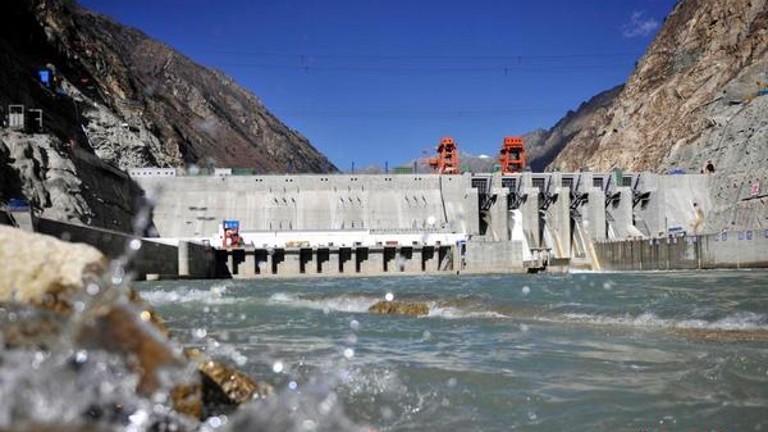
(TibetanReview.net, Nov25, 2014) – China has partially begun operating on Nov 23 the largest hydropower station it has built so far in the Tibet Autonomous Region (TAR), reported the official Xinhua news agency Nov 23. The dam is bound to enhance fears in India and Bangladesh about flash floods and related risks like landslides involving lives of millions of people downstream, said a timesofindia.indiatimes.com report Nov 24.
The Xinhua report said the first section of the 9.6 billion yuan (US$ 1.5 billion) Zangmu Hydropower Station, built 3,300 meters above sea level over the Yarlung Tsangpo (Brahmaputra in India), had gone into operation on Nov 23 afternoon, with five other sections due for completion no later than next year.
It said the huge project will have power capacity of 510,000 kilowatts after its four-year construction and is designed to generate 2.5 billion kilowatt hours of electricity annually after completion.
The report cited official statistics as showing the TAR’s per capita electricity consumption in 2013 was slightly over 1,000 kilowatt hours, less than one third of the average in the People’s Republic of China.
India has repeatedly expressed concern about the dangers of damming the Brahmaputra, one of the strongest Himalayan rivers, in upstream areas in Tibet. However, China has routinely responded saying its plans were restricted to run-off-the-river dams focused on generating electricity, which posed little danger.
The timesofindia.indiatimes.com report cited unnamed sources as saying Indian officials had so far been satisfied by Beijing’s explanations, not realizing China was actually building a massive project that would affect the river’s flow into Arunachal Pradesh and other parts of the northeastern region of India.


